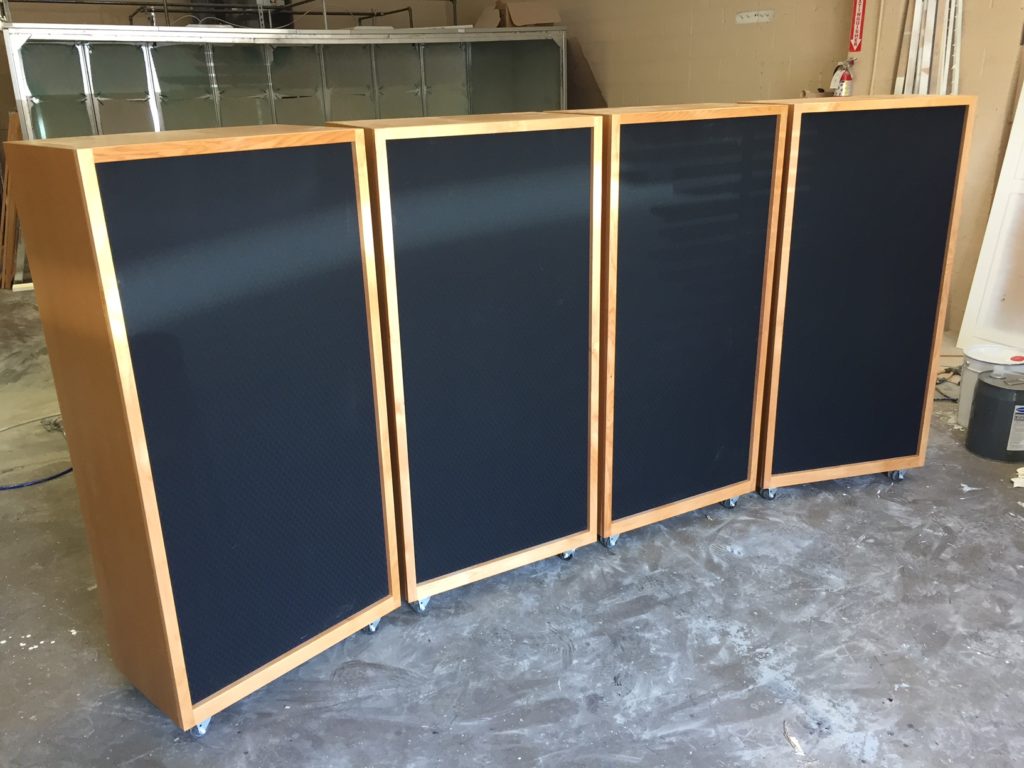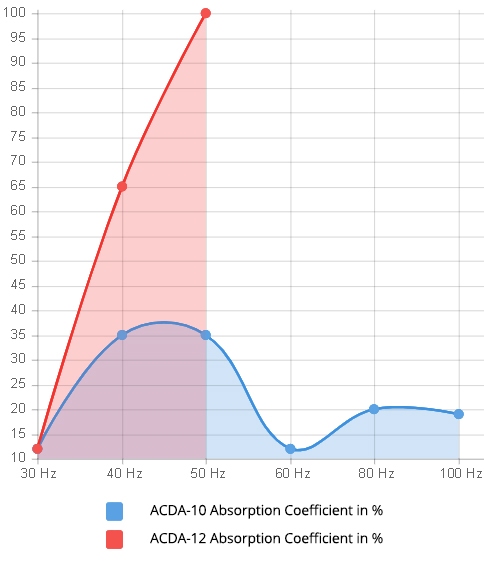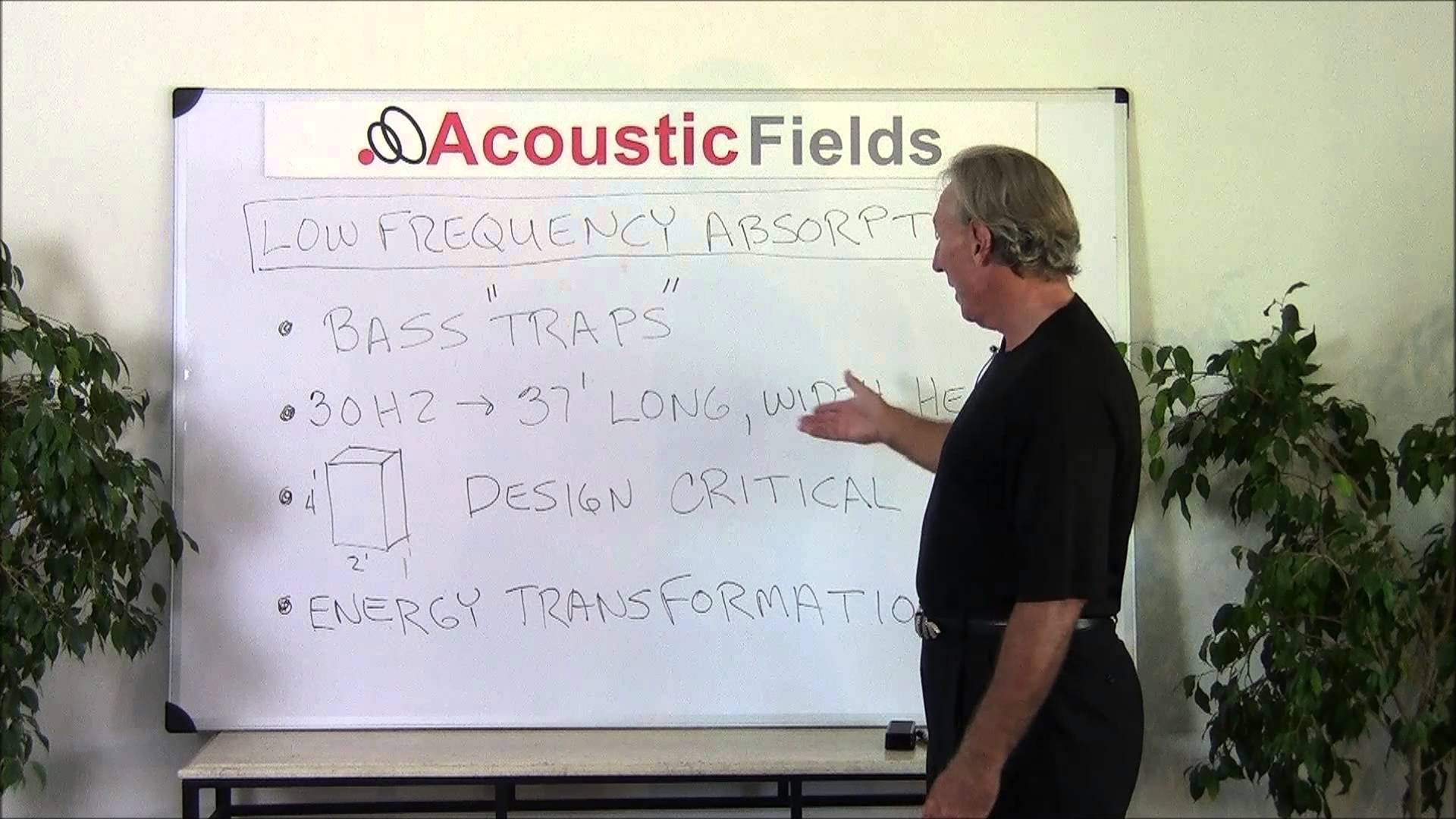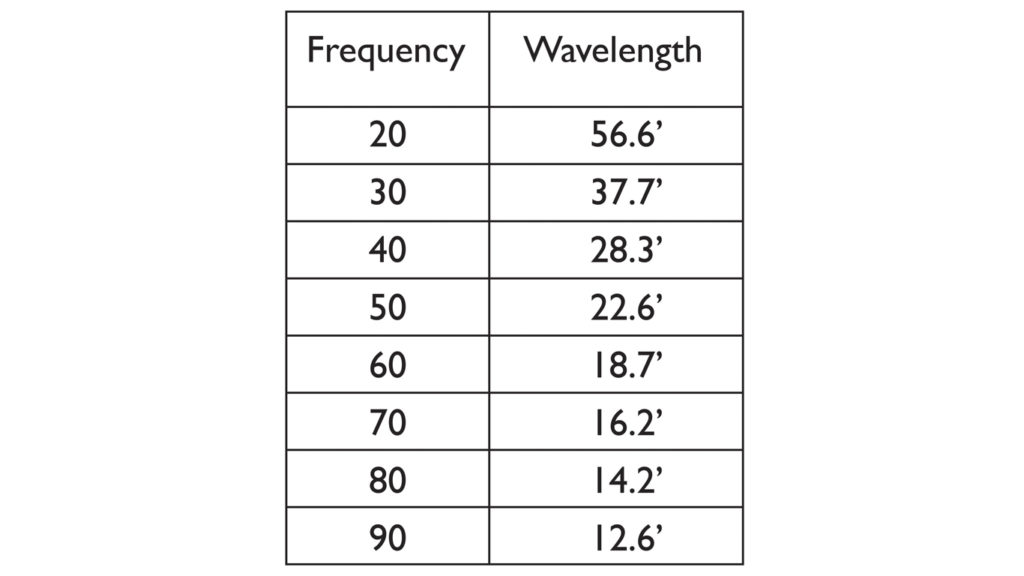Since this articles original posting new information has come to light regarding bass traps, we’ve updated this blog on 11/19/19 to reflect these changes.
Do you have a low frequency or “bass boom” in your room and know deep down that you need a “bass trap” of some sort? Most rooms do unless you have at least 40′ in all dimensions of your room and most of us are not fortunate to have a room with those dimensions. You know that sound of excess bass energy in your room.
It is that sound that masks middle and high frequencies with all of its energy. You know those places within your room where low-frequency pressure exists and accumulates. Hopefully, it is not around your speakers or listening position, but most of the time it is. These are called room modes and are the acoustic distortions that you have based on your room dimensions and associated room volume. You just know you need to do something about these. For frequencies below 100 Hz., we must turn to a device called a bass trap and hope that it will actually trap bass.
Day Of Reckoning
You take your newly purchased bass trap and place it in the areas of our room where room modes appear. You get them set up according to the manufacturer’s instructions and then begin your listening/testing process. You hear some improvement in the middle-frequency range but hear comes that 30 Hz. bass note on electric bass and there it is again. That bloom or distorted sound energy filling that area you have just placed the “bass trap” in. You can’t hear the vocals and middle-frequency instruments sound blurred and smeared. Where is the bass trapping the manufacturer promised.

Acoustic Fields Diaphragmatic Absorbers
Bass Traps?
You bought what you thought were bass traps or what the acoustics product manufacturer calls a bass trap. It is probably a cardboard tube or a thicker piece of foam, but does it really trap bass? The manufacturer calls it a bass trap but how can this piece of foam 12″ thick absorb a 37′ long 30 Hz. wavelength? How does a box filled with building insulation absorb this same wavelength when it is only 4″ deep? Well it can’t.
There is no real low-frequency absorption occurring in your room. You still have the same excess pressure problem, even though you have purchased and placed numerous bass traps in the room’s problematic areas. In this video, I explain the physical properties required and the science behind absorbing low-frequency energy. Once you understand the process, you will be able to quickly realize that calling a foam wedge, cardboard tube, or box filled with building insulation is no real bass trap.
Room Modes: https://en.wikipedia.org/wiki/Room_modes
Long Waves
Low-frequency energy waves are long and powerful. To absorb them, a manufacturer must spend extra time and money developing bass traps. He should not make claims that can not be justified using our current laws of physics. Manufacturers must abide by the laws of physics and only bend the laws, not break them. A manufacturer must establish actual low-frequency design parameters and actively use those to achieve the end goal of real and effective bass absorption. Most do not do this. They just change the text and distort the low-frequency sound definition.
- Frequency Vs. Wavelength 20Hz – 90Hz
Not Enough Research And Development
It is less expensive for an acoustics product manufacturer to take a middle frequency absorption product which is easier and cheaper to design and simply make it thicker or deeper and then label it a low frequency or bass absorber. This process fills out their product line and now they can claim a products that are bass traps when in reality they are middle and high-frequency absorbers. This is why when you purchase multiple units and it does require multiple units for low-frequency management, you get them installed and still have the bass boom.
Diaphragmatic Absorbers: https://www.acousticfields.com/product-category/sound-absorption/acda-series/
Fortunately, not everyone is a crook. We are a manufacturer that actually delivers a low-frequency absorption product and has the independently tested data to prove it. They are the most powerful free-standing low-frequency absorbers in the world. As you will see the world-famous Riverside Labs independently tested and verified the performance with 100% absorption all the way down to 50 Hz.

Absorption Performance of Acoustic Fields Activated Carbon Diaphragmatic Absorbers
If you have any questions please don’t hesitate to ask. It’s time to stop the myths of some sound absorption products in their tracks. If there is no independently verified performance data with a product you want to ask why? How can they claim it will work if there is no test data? What do they have to hide? I’m sure you’re clever enough to figure it out.
In Summary
If you have any questions follow up questions on this subject please feel free to email me and I will be happy to help. Please message me at info@acousticfields.com. If you want to learn more about room acoustics please sign up for our free acoustic video training series and ebook. Upon sign up you will have instant access to the room acoustic training videos and ebook to help improve the sound in your studio, listening room or home theatre.
Best of luck and good room acoustic health!
Dennis








